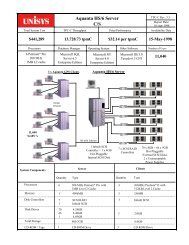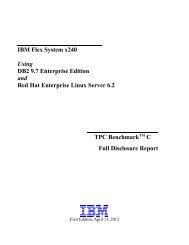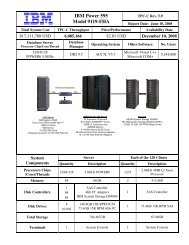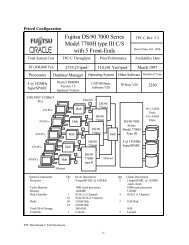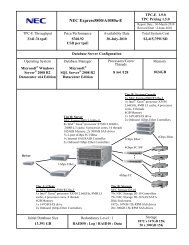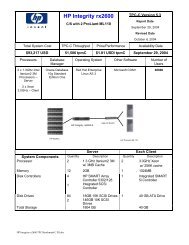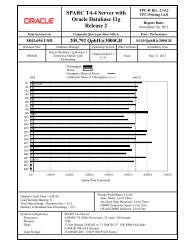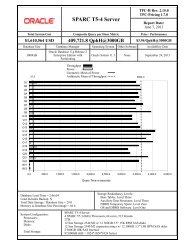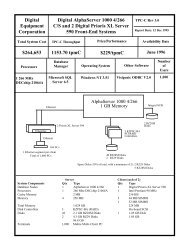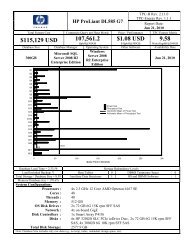TPC Benchmark E Full Disclosure Report
TPC Benchmark E Full Disclosure Report
TPC Benchmark E Full Disclosure Report
You also want an ePaper? Increase the reach of your titles
YUMPU automatically turns print PDFs into web optimized ePapers that Google loves.
Consistency conditions 1, 2, and 3 were tested using a batch file to issue queries to the database after thedatabase was loaded and after the Business Recovery Test. The results of the queries demonstrated that thedatabase was consistent for all three tests.The procedure for running the consistency tests is documented in the fileSupportingFiles\Clause7\MS<strong>TPC</strong>E ACID Procedures.pdf.The consistency scripts and outputs are located in the directory SupportingFiles\Clause7\Consistency.Isolation RequirementsThe isolation property of a Transaction is the level to which it is isolated from the actions of otherconcurrently executing Transactions. Systems that implement Transaction isolation using a locking and/orversioning scheme must demonstrate compliance with the isolation requirements by executing the testsdescribed in Clause 7.4.2.Isolation tests 1 through 4 were successfully done following the procedure documented in the fileSupportingFiles\Clause7\MS<strong>TPC</strong>E ACID Procedures.pdf.The isolation scripts and outputs are located in the directory SupportingFiles\Clause7\Isolation.Durability RequirementsThe SUT must provide Durability. In general, state that persists across failures is said to be Durable andan implementation that ensures state persists across failures is said to provide Durability. In the context ofthe benchmark, Durability is more tightly defined as the SUT‘s ability to ensure all Committed data persistacross a Single Point of Failure.Durability Test for Data AccessibilityThe Test Sponsor must report in the <strong>Report</strong> the Redundancy Level (see Clause 7.6.7.1) and describe theData Accessibility test(s) used to demonstrate compliance.A Data Accessibility Graph for each run demonstrating a Redundancy Level must be reported in the <strong>Report</strong>(see Clause 7.6.7.2).This benchmark result used Redundancy Level 1. The test for Redundancy Level 1 is the test forpermanent irrecoverable failure of any single Durable Medium.To prove Redundancy Level 1, the following steps were successfully performed:1. Restored the database to its freshly-loaded, proven-consistent state.2. Determined the current number of completed trades in the database, count1.3. Started a run, using the profile from the measured run, with checkpoints, and met the DurabilityThroughput Requirements for at least 5 minutes.4. Induced the first failure, which in this case was failing a drive in a database data array byphysically removing it from its enclosure. Since the database data arrays are RAID protected,transaction processing continued.5. Waited until the Durability Throughput Requirements were met again for at least 5 minutes.6. Induced the second failure, which in this case was failing a drive in the database log array byphysically removing it from its enclosure. Since the database log array is RAID protected,transaction processing continued.7. After a few minutes passed, a new drive was inserted into the log enclosure to replace the failedlog drive. The log array rebuilding process was started.©IBM Corporation <strong>TPC</strong>-E <strong>Benchmark</strong> <strong>Full</strong> <strong>Disclosure</strong> <strong>Report</strong> – March 2012 26



